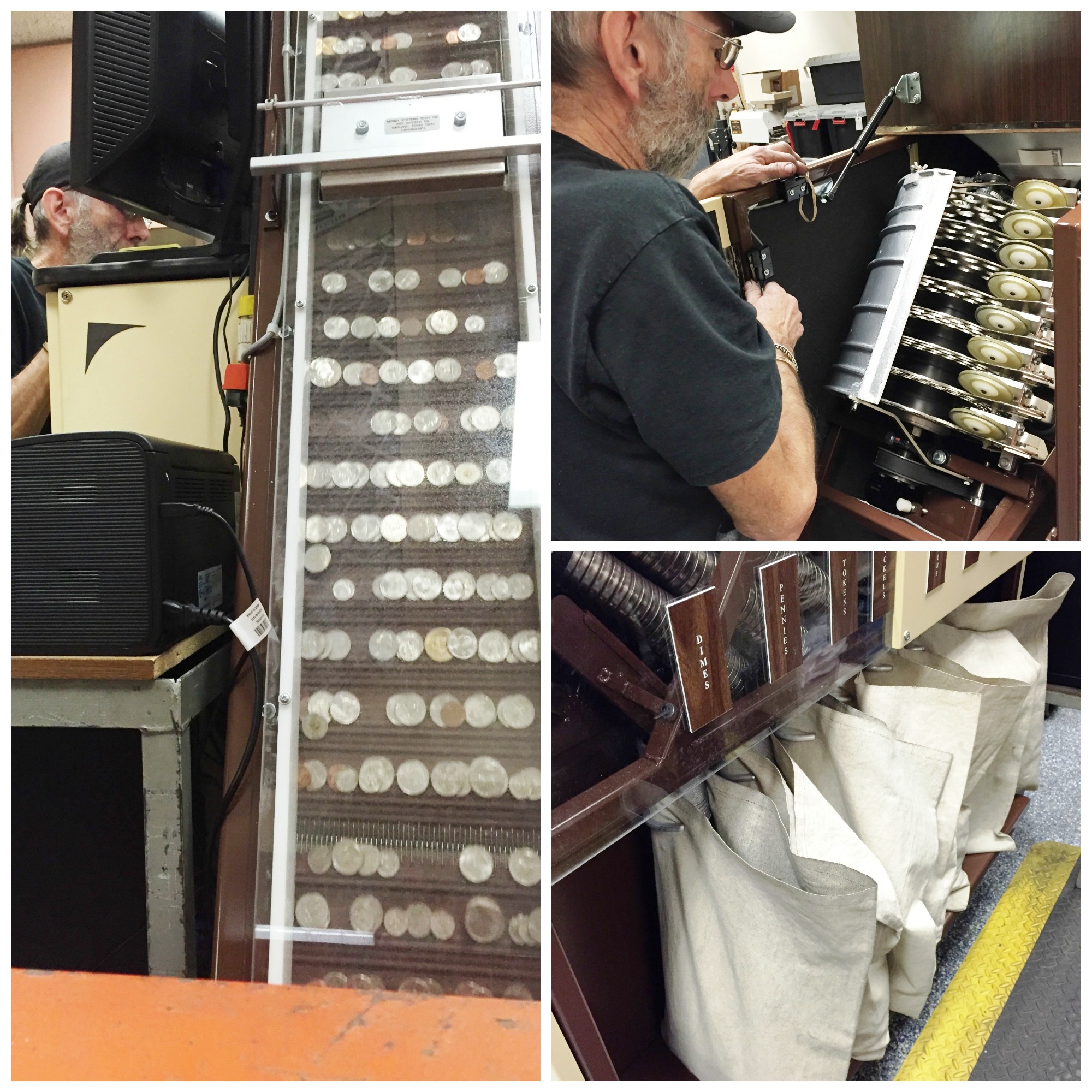 A growing numbers of customers are using Go-To Cards and other passes to pay their fares without reaching for their wallets. But for many of Metro Transit’s customers, cash is still king.
A growing numbers of customers are using Go-To Cards and other passes to pay their fares without reaching for their wallets. But for many of Metro Transit’s customers, cash is still king.
Collecting, counting and quickly depositing all the bills and coins inserted into fareboxes and ticket vending machines is a daily task that requires a combination of manual labor, good accounting and appropriate safeguards.
The epicenter of this work is Metro Transit’s Central Counting Department, staffed by a team of revenue processing specialists who sort and stack piles of bills, feed mountains of coins through machines that organize them by denomination and weed out the unlikely debris that enters the mix.
“It’s a daily challenge to make sure we’re balancing the books and that everything comes out as it’s supposed to,” Revenue Collections and Processing Supervisor Abdul Ahmed said. “But we always do it.”
The longest-tenured member of the revenue collection team is Ian Stevens, who started as a coin counter more than 42 years ago and continues to begin the money-counting process each morning around 2 a.m.
“I had just gotten out of the service and I thought I’d get a few days to goof off but my wife said, ‘No, you’re getting a job,’” Stevens said. “This was the first place that called back.”
On a recent morning, Stevens pulled an orange metal bin up to a coin counting machine, releasing a small door and allowing coins to spill onto a conveyor belt. After rising several feet, the coins noisily fell through a cyclone of spinning metal that separated dimes, nickels, quarters and other denominations.
In about 20 minutes, 25,330 coins – including nearly 14,000 quarters – had fallen into cloth bags to be re-counted for verification and bagged according to U.S. Federal Reserve standards.
Removed from the mix was a 15-year-old Chuck E. Cheese token and several pieces of foreign currency that will eventually be exchanged. (Stored in a separate box is a collection of Pesos, Canadian dollars, Chinese Yuan, Euros and other bills from around the globe).
The machines used to organize the coins are new to the department but are very similar to those that were recently taken out of service after counting more than 3 billion coins over the last three decades. (Fun fact: that is more than enough coins to make a continuous roll from Metro Transit to the US. .Mint in Philadelphia, Penn., where the coins were minted.)
The recently-retired machines, slightly bulkier and less efficient, are waiting to go into storage and have been signed with wishful good-byes from staff in Central Counting.
Much of the other equipment used in Central Counting also dates back several decades, a reminder that while inflation has impacted the value of U.S. currency little has changed in its form or function.
The enduring quality of cash is why Central Counting is expected to remain a vital part of the revenue collecting operation at Metro Transit. Around half of Metro Transit’s customers now use a Go-To Card or pass, but just as many are relying on crumpled bills and loose change.
In 2014, around $28 million was collected in cash fares, representing about a quarter of all fare revenue.
“Automatic fare payments are a convenient option for many of our customers, but we also know that a lot of people who ride still rely on and expect us to accept cash,” said Revenue Processing Manager Dennis Dworshak. “It’ll keep coming and we’ll keep counting it for the foreseeable future.”
> Good Question: Why no sales tax on fares?
> Good Question: Why does it cost more to ride during rush hour?